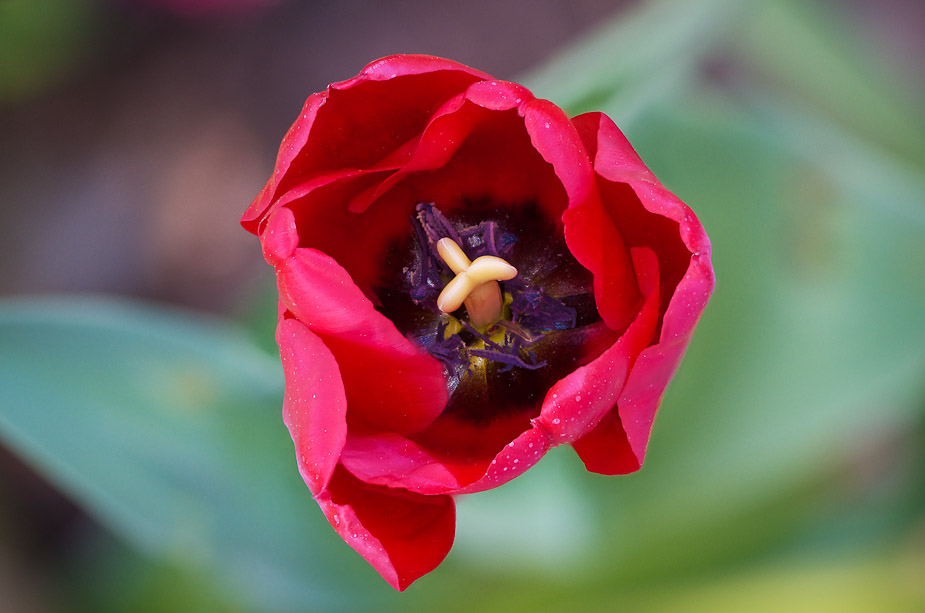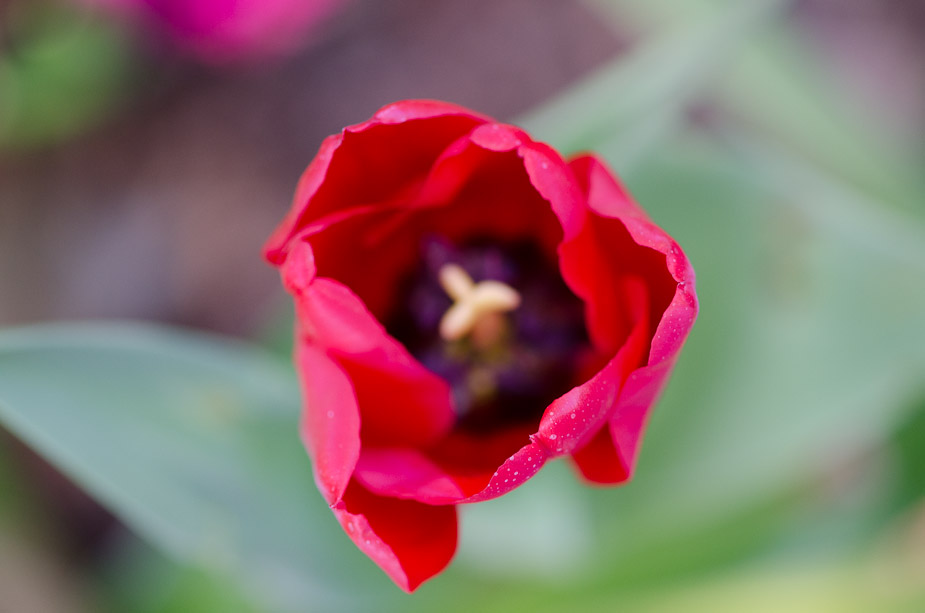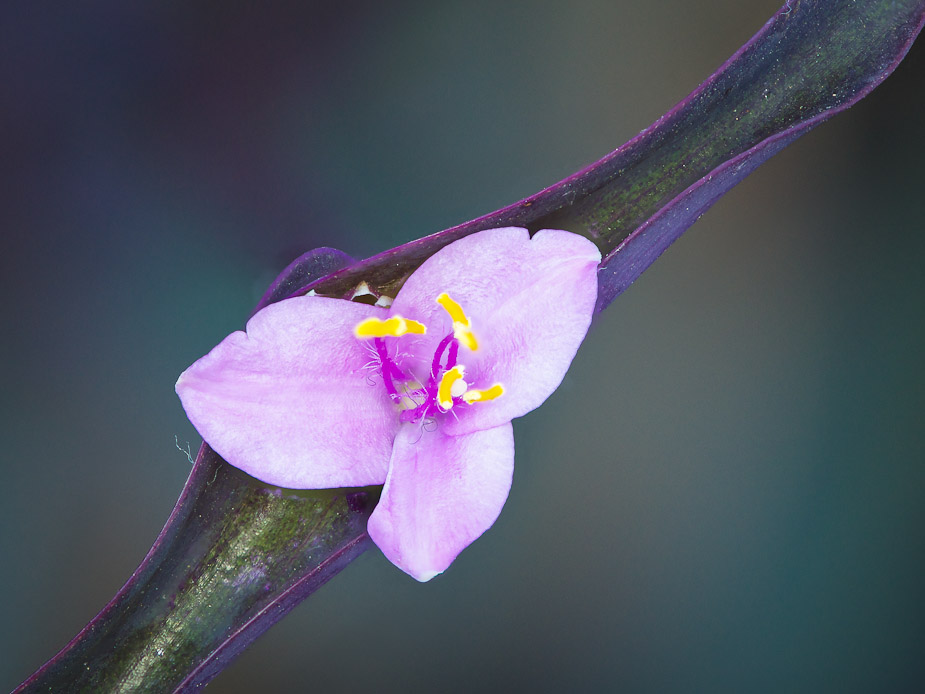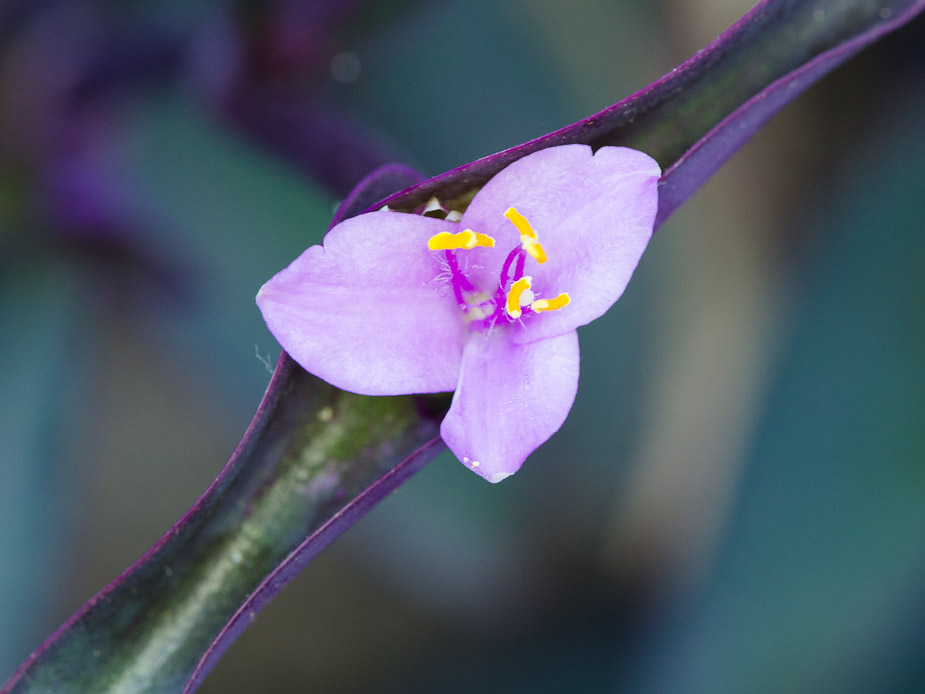Early on in the day it was looking good with overcast skies and relatively still conditions - by the time lunchtime arrived however it was clear blue skies and a little windy
About half a dozen of us headed across to the gardens with our cameras and gear and looked for suitable subjects - for this trip I borrowed a friends AF-S VR Micro-Nikkor 105mm f/2.8G IF-ED lens (essentially because the front doesn't extend with focus). I was still looking for subjects to focus stack - here are some early samples...
The stacked image of this tulip using 12 of the 19 frames I took [1/160 sec at f/3.2, ISO 640] (again wind was a factor here with the stem swaying in the light breeze - still the software has done a remarkable job of auto aligning the subject for me)

and here is one of the individual frames for comparison

I'm really surprised this next one turned out at all - this stem was swaying around quite considerably and I had little hope of it stacking at all - however both sets of images I stacked worked - here this is the stack of 19 images [1/160 sec at f/4, ISO 1000]

and for comparison a single frame at 1/15 sec at f/11, ISO 800

One further tip I have with focus stacking is this - I stack the images to produce the result with a much sharper main subject with vastly increased depth of field but I then generally blend back in the softer and smoother background bokeh from one or more of the source images (often the nearest focused frame). Sometimes the stacking process produces a slightly ugly background which is mostly a reasonably soft blur but some edges can get enhanced/sort of sharpened by the process. Basically the buttery soft bokeh background from the source frames are generally much nicer.

